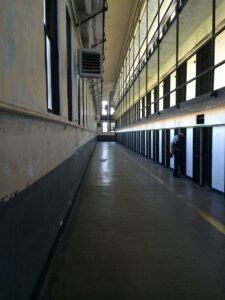By John Jay Powers
Jack Powers is an inmate in the federal Bureau of Prisons convicted of bank robbery and escaping from prison. He spent more than a decade in extreme isolation at the ADX where he amputated his fingers, earlobes, a testicle and his scrotum. He has tried several times to commit suicide. “The world outside is like another planet,” he wrote from ADX. “I feel like I am trapped within a disease.” Powers is a plaintiff in a civil rights lawsuit against the federal government regarding its use of longterm solitary confinement for the mentally ill. – S.G.
After 12 long, hard years at the ADX Control Unit Supermax Prison in Florence, Colorado, I’m finally out and among the living. Oh, I’m not on the streets. I’m here among the general population of a federal penitentiary in the dry and dusty desert of Tucson, Arizona.
For a guy who has lived alone in a cement box for more than a decade, the transfer here was really something. First there was a bus and then air-service called “Con-Air” – big passenger jets flown around the U.S. by the Marshalls Service. I had the opportunity to speak with other prisoners and see a couple of cities both from land and air. It was a trip for me for sure.
When we pulled up at the pen, I was all prepared to go straight to the segregation where, once again, I’d be put into solitary confinement. Instead, a number of prison officials met me inside the door and told me that I’d be going directly into the population – into the best unit, in fact, where I’d have single cell. I was so shocked by this turn-around that I began to shed tears.



